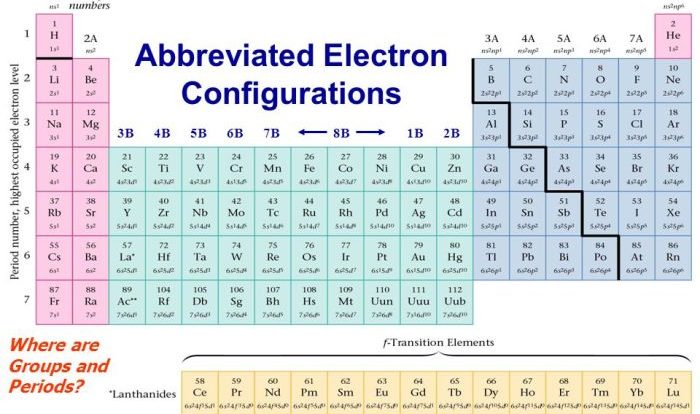Ethyl 4 aminobenzoate density g ml – Ethyl 4 aminobenzoate (E4AB) density, measured in grams per milliliter (g/mL), is a crucial property that plays a significant role in various applications. Understanding its density is essential for accurately handling, storing, and utilizing this compound.
This comprehensive guide delves into the intricacies of E4AB density, exploring the factors that influence it, the methods used to measure it, and its practical implications. We will also compare it with other similar compounds and examine the impact of temperature and pressure on its density.
Ethyl 4 Aminobenzoate (E4AB) Density
Ethyl 4-aminobenzoate (E4AB), also known as ethyl para-aminobenzoate, is a chemical compound with the molecular formula C9H11NO2. It is an ester formed from the reaction of 4-aminobenzoic acid and ethanol. E4AB is a white or colorless crystalline solid with a characteristic odor.
The density of E4AB is 1.11 g/mL at 20 °C. This means that 1 mL of E4AB weighs 1.11 grams. The density of a substance is an important physical property that can be used to identify the substance and to calculate other physical properties, such as mass and volume.
Factors Affecting the Density of E4AB
The density of E4AB is affected by several factors, including:
- Temperature:The density of E4AB decreases as the temperature increases. This is because the molecules of E4AB become more energetic at higher temperatures and move around more, which causes the volume of the substance to increase.
- Pressure:The density of E4AB increases as the pressure increases. This is because the molecules of E4AB are forced closer together at higher pressures, which causes the volume of the substance to decrease.
- Purity:The density of E4AB is also affected by its purity. If E4AB is not pure, it will contain other substances that will affect its density.
Measurement of E4AB Density
Determining the density of Ethyl 4 Aminobenzoate (E4AB) is crucial for various applications, including quality control, process optimization, and research.
Methods for Measuring E4AB Density
Several methods are commonly employed to measure the density of E4AB:
- Pycnometer Method:This technique involves using a pycnometer, a specialized glass vessel with a known volume. The pycnometer is filled with E4AB and weighed to determine the mass. The density is then calculated by dividing the mass by the volume.
- Oscillating U-Tube Method:This method utilizes a U-shaped tube filled with E4AB. The tube is oscillated, and the frequency of oscillation is measured. The density is calculated based on the relationship between the oscillation frequency and the fluid’s density.
- Vibrating Tube Method:This technique involves placing E4AB in a vibrating tube. The resonant frequency of the tube is measured, and the density is calculated based on the relationship between the resonant frequency and the fluid’s density.
Importance of Accurate Density Measurements, Ethyl 4 aminobenzoate density g ml
Accurate density measurements of E4AB are essential for several reasons:
- Quality Control:Density measurements help ensure that E4AB meets the required specifications and quality standards.
- Process Optimization:Accurate density data allows for the optimization of production processes, such as mixing, blending, and storage.
- Research and Development:Density measurements are used in research and development to investigate the properties of E4AB and its applications.
Applications of E4AB Density
Ethyl 4-aminobenzoate (E4AB) density plays a crucial role in various applications, particularly in the pharmaceutical and chemical industries. Its precise measurement is essential to ensure accurate dosing, product quality, and process efficiency.
Drug Formulation and Development
In the pharmaceutical industry, E4AB is commonly used as an active pharmaceutical ingredient (API) in medications. Its density is critical for determining the appropriate dosage form, such as tablets, capsules, or injectables. Accurate density measurements ensure that the correct amount of API is delivered in each dose.
Chemical Synthesis and Production
In the chemical industry, E4AB is involved in various synthesis processes. Its density is crucial for determining the concentration of E4AB in reaction mixtures and for calculating reaction yields. Precise density measurements help optimize production efficiency and ensure product quality.
Solvent and Surfactant Applications
E4AB is also used as a solvent and surfactant in various industries. Its density affects its solubility, viscosity, and surface tension. Accurate density measurements are necessary to determine the appropriate concentration for specific applications, such as cleaning solutions, paints, and cosmetics.
Analytical Chemistry and Quality Control
In analytical chemistry and quality control, E4AB density is used as a parameter to identify and characterize the compound. Density measurements can be used to differentiate between different grades or sources of E4AB and to detect impurities or adulterants.
Comparison with Other Compounds
The density of Ethyl 4 Aminobenzoate (E4AB) is comparable to that of other similar compounds, such as benzoic acid and methyl benzoate. These compounds all have a benzene ring structure with a carboxylic acid or ester group attached. The presence of the benzene ring contributes to the high density of these compounds, as the carbon-carbon bonds in the ring are strong and tightly packed.
Factors Influencing Density
The density of a compound is influenced by several factors, including its molecular weight, molecular structure, and intermolecular forces. E4AB has a molecular weight of 151.16 g/mol, which is higher than that of benzoic acid (122.12 g/mol) but lower than that of methyl benzoate (152.15 g/mol).
The molecular structure of E4AB is similar to that of benzoic acid, with a benzene ring and a carboxylic acid group. However, the presence of the ethyl group in E4AB increases its molecular weight and, consequently, its density.
The intermolecular forces present in E4AB are also similar to those in benzoic acid and methyl benzoate. These compounds all exhibit dipole-dipole interactions due to the presence of the polar carboxylic acid or ester group. Additionally, the benzene ring in these compounds can participate in van der Waals interactions.
The combination of these intermolecular forces contributes to the high density of E4AB and similar compounds.
Impact of Temperature and Pressure
Temperature and pressure significantly influence the density of ethyl 4-aminobenzoate (E4AB). Understanding these effects is crucial for various applications, including accurate dosing and efficient processing.
Effect of Temperature
As temperature increases, the kinetic energy of E4AB molecules increases, leading to increased molecular motion and reduced intermolecular forces. Consequently, the volume of the substance expands, resulting in a decrease in density.
For instance, at 25 °C, the density of E4AB is approximately 1.10 g/mL. However, when heated to 50 °C, its density drops to around 1.08 g/mL due to thermal expansion.
Effect of Pressure
Pressure exerts an opposing effect on the density of E4AB. As pressure increases, the molecules are forced closer together, reducing the volume occupied by the substance. This compression leads to an increase in density.
For example, at atmospheric pressure, the density of E4AB is 1.10 g/mL. However, when subjected to a pressure of 100 atm, its density increases to approximately 1.12 g/mL due to the reduction in volume.
Safety Considerations
Ethyl 4-aminobenzoate (E4AB) should be handled with care, as it poses potential health risks. It is essential to adhere to appropriate safety guidelines to minimize exposure and prevent adverse effects.
Proper protective equipment, including gloves, eye protection, and respiratory protection, should be worn when handling E4AB. Avoid direct skin contact and inhalation of vapors or dust. Ensure adequate ventilation in the work area to prevent the accumulation of harmful substances.
Storage
E4AB should be stored in a cool, dry, and well-ventilated area. Keep it away from direct sunlight, heat, and incompatible materials. Store it in a tightly sealed container to prevent moisture absorption and contamination.
Disposal
E4AB should be disposed of properly to avoid environmental contamination. Follow local regulations and guidelines for the disposal of hazardous waste. Consider incineration or chemical treatment methods to ensure its safe and environmentally friendly disposal.
Questions Often Asked: Ethyl 4 Aminobenzoate Density G Ml
What factors influence the density of ethyl 4 aminobenzoate?
Temperature, pressure, and the presence of impurities can affect the density of E4AB.
How is the density of ethyl 4 aminobenzoate measured?
Density can be measured using methods such as pycnometry, vibrating tube densimetry, and oscillating U-tube densimetry.
What are some applications of ethyl 4 aminobenzoate?
E4AB is used in the production of dyes, pharmaceuticals, and personal care products.

